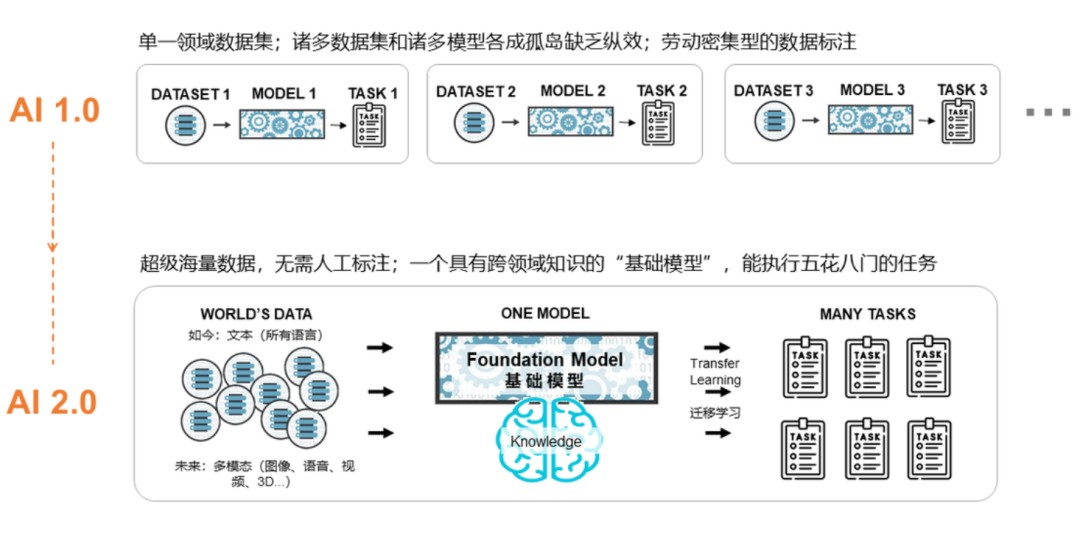How Does AI 2.0 Entrepreneurship Differ from AI 1.0?
-
The entrepreneurial stories of the AI 1.0 era are coming to an end. Kai-Fu Lee declared on the eve of his new venture: 'AI 2.0 has arrived, bringing platform opportunities ten times larger than the mobile internet.'
Yin Qi, a graduate of Tsinghua University's Yao Class, along with classmates Tang Wenbin and Yang Mu, transformed from naive students into startup CEOs by developing a game called Crowd Coming, which was based on facial recognition and tracking technology. They successfully secured angel investment and founded Megvii Technology.
Huang Wei, who left Shanda Innovation Institute, decided to strike out on his own and established Unisound, creating a technological rivalry with iFlytek, founded by Liu Qingfeng.
Professor Tang Xiao'ou from the Chinese University of Hong Kong accepted tens of millions of dollars in investment from IDG Capital and embarked on an entrepreneurial journey with over 50 doctoral and postdoctoral students, founding SenseTime.
In 2015, Zhou Xi decided to leave his role as an expert at the Chinese Academy of Sciences and led a group of scientists specializing in facial recognition to establish CloudWalk.
If AI 1.0 was an opportunity for scientists and engineering experts, the AI 2.0 entrepreneurial era demands more than just academic backgrounds. It is now a battlefield dominated by technical practitioners and massive capital, resembling a stage for industry titans.
Looking back at the illustrious careers of these industry leaders, many graduated from prestigious institutions like Berkeley, Carnegie Mellon, Tsinghua, and Shanghai Jiao Tong University, and have worked at top companies such as Microsoft, Google, Apple, Alibaba, and JD.com. Most have already achieved fame and financial freedom, now pursuing higher entrepreneurial goals on a spiritual level.
With their past accolades, these new AI model entrepreneurs quickly gained favor from investors. For instance, Wang Huiwen's Light Years Beyond was valued at $200 million right after its launch. Such high barriers to entry leave other aspiring entrepreneurs far behind.
However, beyond these differences, the most critical factor remains technology.
During the AI 1.0 era, companies emerged focusing on speech recognition and image recognition technologies. Representatives of the former include iFlytek, Unisound, and AISpeech, while the latter includes SenseTime and Megvii. In later stages, entrepreneurs, including the 'Four Dragons,' avoided direct competition and instead focused on niche sectors like smart vehicles and healthcare.
These companies quickly rose to become unicorns by excelling in specialized technical fields. However, due to the limitations of the technology at the time, they faced a significant challenge: their solutions were confined to limited vertical markets, with high costs for R&D, deployment, and operations.
Last year, SenseTime's stock price experienced a flash crash, plummeting over 50% intraday and wiping out over HKD 91.5 billion in market value in a single day. By the end of last year, CloudWalk Technology, which had just gone public, saw its stock price drop from a high of RMB 36.60 per share to RMB 15.31 per share, with its market value shrinking to RMB 11.3 billion.
Additionally, none of the 'AI Four Dragons' could escape the fate of losses. Financial reports show that from 2019 to 2021, the combined losses of these four companies amounted to a staggering RMB 50 billion.
Compared to the AI 1.0 era, AI 2.0 technology is compatible with more scenarios and fields. It is not just about creating a large model applicable to all industries but more about achieving higher generality and practicality at a lower cost in specific vertical scenarios.

Image from Innovation Works official websiteBehind the enticing prospects lies a difficulty that has increased by orders of magnitude. The first challenge is high computing power, which also means high costs.
According to foreign media reports, taking GPT-3's large AI model as an example, OpenAI used nearly 1 trillion words and 45TB of data to train it, with a training cost of approximately $1.4 million. At the same time, the training and inference costs of large models are extremely high. A single operation of ChatGPT costs nearly $4.5 million. Nvidia's latest H100 card costs $34,000, over RMB 200,000. Creating a ChatGPT requires 30,000 such cards, costing at least RMB 600 million.
High computing power and high costs mean an absolute high barrier to entry for entrepreneurship in the AI 2.0 era. Without substantial financial backing, it is impossible to bear the costs of AI training, making the amount of initial funding crucial.
Previously, star players in the capital market, the 'AI Four Dragons,' could only secure financing exceeding tens of millions of yuan after Series B or C rounds. Now, even angel-round financing often reaches tens of millions of dollars, with company valuations in the billions.
Such exorbitant upfront costs are beyond the means of ordinary entrepreneurs and companies. Coupled with the need for absolutely top-tier R&D technology, AI large-model entrepreneurship is destined from the outset to be a game for the elite.
However, money is only the first and easiest hurdle to overcome in AI large-model entrepreneurship.
Facing the unknown prospects of entrepreneurship, talent is an even scarcer resource. When the elites enter the field, the first battle they fight is for talent.
After all, figures like Jia Yangqing, who have worked at top tech companies such as Google, Facebook, and Alibaba, and led the development of multiple deep learning and AI frameworks, are exceedingly rare. Similarly, individuals like Wang Xiaochuan, Li Zhifei, and Zhou Bowen, who possess deep technical expertise and years of industry experience, are few and far between.
Likewise, visionary leaders like Kai-Fu Lee and Wang Huiwen, who can accurately foresee and steer technological trends, are hard to come by.
In the realm of AI model entrepreneurship, technology, capital, and talent are indispensable. Those who possess all three have already left ordinary individuals far behind. The battle among the titans ultimately has no place for the average person.
